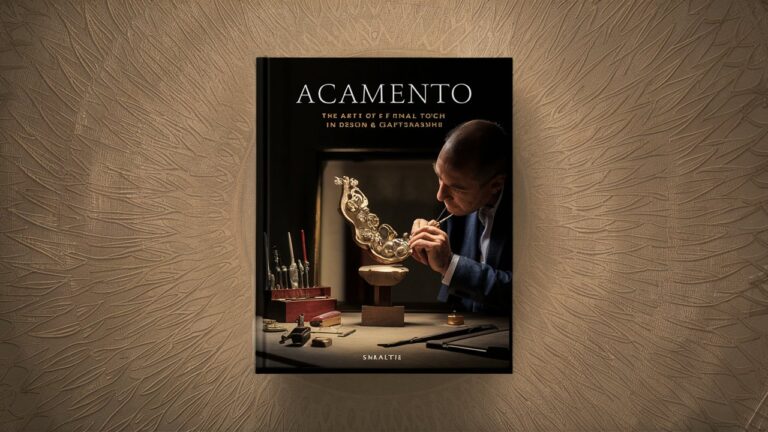“Acamento” is more than just a word—it’s a philosophy, a moment in a project when everything comes together. Derived from the Portuguese “acabamento,” it describes the vital finishing touches that transform the ordinary into something extraordinary. Whether in architecture, fashion, interior design, or everyday creations, acamento is the silent hero that elevates quality, longevity, and aesthetic appeal. In this article, we’ll uncover the meaning of acamento, explore its many real-world applications, and reveal why giving attention to the final step can make all the difference.
What Is Acamento? The Meaning Behind the Term
“Acamento” stems from “acabamento,” a Portuguese term signifying the completion or finishing of something—such as surface finishes, craftsmanship details, or fine trims. It represents that moment when a project receives its final coat of paint, its gleaming polish, or its perfectly stitched seam. Across construction, furniture, and fashion, acamento is the stage where elegance, durability, and functionality converge.
Applications of Acamento: Where You See It in Everyday Life
In architecture and construction, acamento encompasses painting walls, laying tile, installing trim, and applying wood finishes that make spaces look complete and refined The Tipsy Gypsies. In furniture design, it’s the polishing, sanding, or upholstery that adds comfort and beauty. In fashion, it’s the precise stitching, trim, and embellishments that make clothes feel tailored and stylish. Even in art, the final glaze or bright accent is acamento—making visual expression pop.
Why the Finish Matters: The Value of Acamento
Finishing touches aren’t just decorative—they’re functional. A well-applied finish protects surfaces from wear, enhances longevity, and makes maintenance easier. In fashion, strong stitching keeps garments intact; in woodworking, finishing prevents scratches or damage. Aesthetically, acamento brings visual harmony, elevating look and feel. It’s those subtle details—the clean edge, the smooth sheen—that prompt admiration and satisfaction.
How to Incorporate Acamento in Your Projects
-
Plan early: Don’t treat finishing as an afterthought. Select finishes, polish, and trims with the final vision in mind.
-
Use quality materials and tools: Superior paint, fine brushes, or high-grade fabric ensure a flawless result.
-
Test first: Trial your finish on a small area to ensure color consistency and proper application.
-
Take your time: Rushing acamento can cause smudges, uneven polish, or stitch misalignment.
-
Layer thoughtfully: Whether paint, varnish, or fabric, proper drying and layering make finishes uniform and durable.
Conclusion
Acamento—the art of the finishing touch—is what elevates a project from good to exceptional. Whether refining a living space with a sleek paint finish, sewing a garment with precision, or adding polish to everyday objects, acamento brings lasting beauty, strength, and satisfaction. Embrace the final step; it’s the moment where craftsmanship speaks its loudest.
FAQ: Frequently Asked Questions about Acamento
-
What does “acamento” mean?
It’s a stylized term derived from Portuguese “acabamento,” meaning the finishing or final touch that perfects an object. -
Why are finishing touches important?
They enhance durability, improve functionality, and elevate the aesthetic appeal of a project. -
In which fields is acamento commonly used?
Architecture, interior design, furniture making, fashion, and art—all disciplines where final detailing matters. -
How can I improve acamento in my DIY projects?
Prioritize planning, select appropriate finishes, test applications, and execute with precision and patience. -
Is acamento only decorative?
No—it serves both functional (protective, structural) and aesthetic roles, making creations both beautiful and durable.

